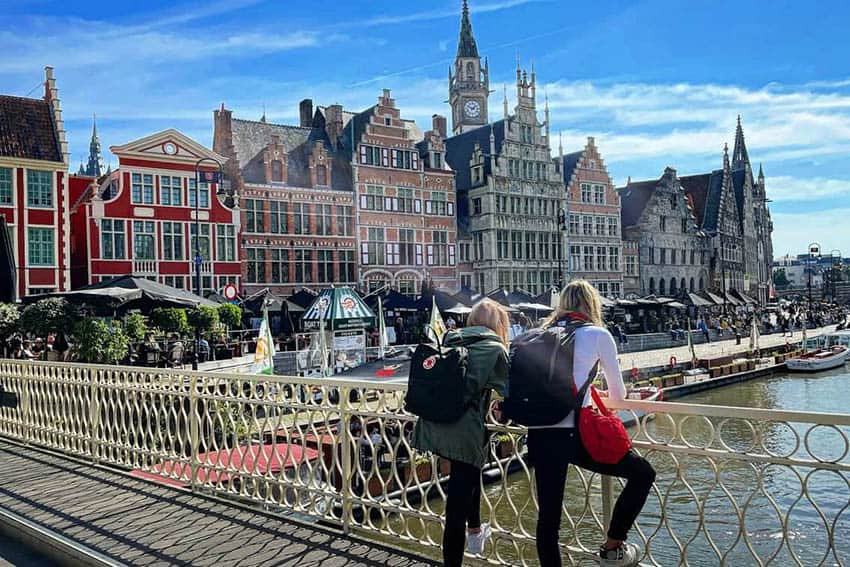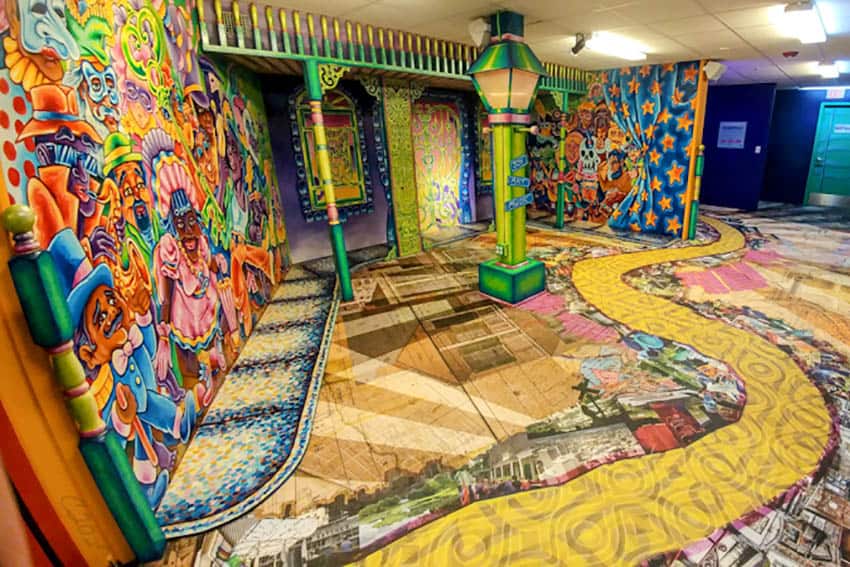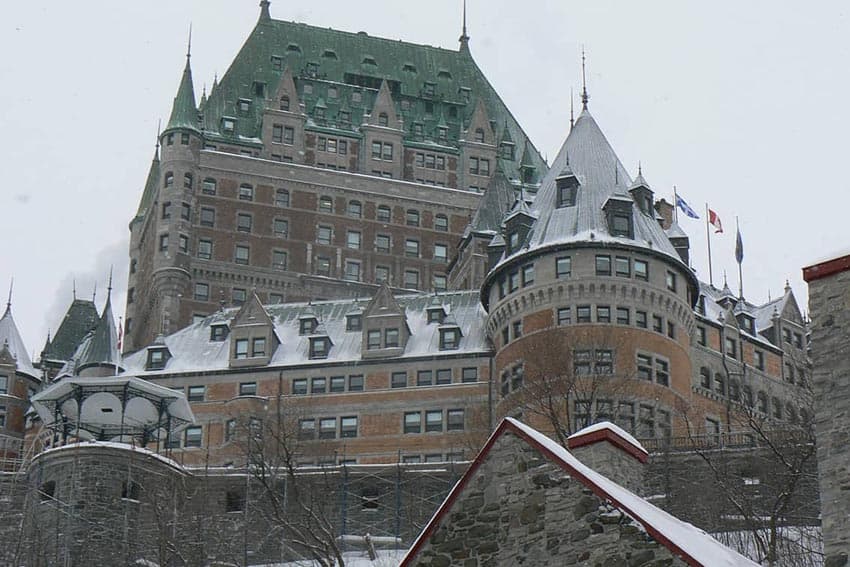Lake Powell in Arizona’s Grand Circle
By Shady Hartshorne

With all the great places to see in the Southwest, it’s good to have a central point to use a base.
Page, Arizona, is smack in the center of what is called The Grand Circle, a vaguely defined area encompassing southern Utah, northern Arizona, parts of New Mexico and, depending on who you talk to, parts of Colorado and/or Nevada.
It’s called the Grand Circle because it includes the Grand Canyon, Bryce, Zion, Mesa Verde, Arches and many other spectacular sites.
Page is not only in the middle of all this but it also sits just above the Glen Canyon Dam which means Lake Powell and the beautiful Colorado River are just a short ride away.
Page has always been a city with a purpose. Workers building the Glen Canyon Dam in 1956 stayed in Camp Page until the dam was completed in 1966. In 1969, work began on the nearby Navajo Generating Station, a coal-fired electric plant a few miles away.
Page’s purpose these days is to provide a launching point for incredible vacations. It has a championship-caliber 18-hole golf course, Lake Powell National, and great trails for hiking and biking.
The main attraction in Page is Lake Powell, the byproduct of the Glen Canyon Dam. It took 17 years for the lake to fill up after the completion of the dam, and it’s impossible to understand the size of Lake Powell until you see it on a map. It runs 186 miles from tip to tip and covers 254 square miles.
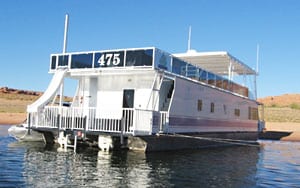
If you were able to stretch the shoreline of Lake Powell into a straight line, it would run from Mexico to Canada, almost 2,000 miles.
Hundreds of side canyons shoot off in all directions providing an endless array of places to explore, enjoy the world-class fishing, water ski, or tube on the glass-flat open stretches.
The surface of Lake Powell reflects the beautiful red rocks creating kaleidoscopic tableaux as you wind your way up into narrow canyons.
Each time you think you’ve hit a dead-end, there’s an opening on the right or left that appears as if out of nowhere.
How about a Houseboat?
I was able to travel Lake Powell in style aboard a 75-foot houseboat from Antelope Point Marina. They have just completed an amazing floating marina/restaurant complex, and from there you can rent everything from houseboats to personal watercraft, kayaks or water skis.

If you want to practice your waterskiing, Antelope Point Marina has a giant winch they call “Grinch” that will pull skiers or tubers fast enough to simulate being pulled by a boat, without leaving the Marina.
The restaurant/lounge, Ja’ di’ tooh, features dramatic water-level views and Gramma Betty’s has ice cream and coffee. The adjoining store has sunscreen, extra suits, and whatever else you might have forgotten.
It’s amazing to think this 27,000-square-foot complex, constructed out of 33,000 cubic feet of concrete and 247,000 pounds of reinforcing steel actually floats! The secret is in the styrofoam: 122,000 pounds of it.
Rental houseboats at Antelope Point Marina are supplied by ForeverHouseboats and they come in lengths from 50 to 75 feet. They’re easy to drive and the staff will make sure you are aware of all the safety features.
The largest has six bedrooms, a hot tub, a full kitchen with two refrigerators and two bathrooms including one with an easily accessible walk-in shower. For mobility-impaired people, a lift is available on some models to allow a wheelchair to get up to the top deck.

If you don’t feel like cooking, you can rent the chef from Ja’ di’ tooh for a night. For my trip, he served up a torch-lit dinner on the beach consisting of crab legs with potatoes and sausage served without plates or utensils on paper tablecloths.
No dishes to wash! You can eat everything with your hands and roll up the tablecloths when you’re done.
I spent the rest of the evening by the campfire counting stars and preparing for a glorious sunrise swim in the morning. Starting with a trip down the slide, of course.
Rafting in Glen Canyon
At the base of Lake Powell, the Glen Canyon Dam towers 700 feet above the launch area for Colorado River Discovery tours. Pontoon boats take visitors downriver through the canyon to Lee’s Ferry.

If you’ve heard scary stories about whitewater rafting down the Colorado River, fear not. These boats take up to 22 passengers on a leisurely float down the upper portion of the Colorado past the soaring Navajo sandstone walls of Glen Canyon.
Your guide skillfully navigates the boat down the river, describing the history and geology of the area, and if they’re like my guide, Chris Sams, they’ll fill you in on a lot of the legends and lore of the people who have made their living on the river.
You’ll hear about Major John Wesley Powell, who explored and mapped the area on two separate harrowing trips. Back in Page you can visit the Powell Museum to learn more about this amazing explorer.
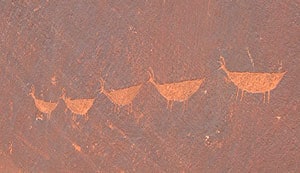
You might also hear about Georgie White, the legendary first lady of the Colorado River.
She was the first woman to swim through the canyon, the first to run boats down the rapids, and her invention of lashing rafts together to accommodate paying customers is the forebear of the boats that Colorado River Discovery runs today.
Bring your lunch, plenty of sunscreen and a hat, because you’ll be out on the water for 4-5 hours as you cover 15 miles of some of the most beautiful landscapes you’ll ever see.
There’s a pit stop with restrooms where you can eat your lunch, freshen up and hike a short way to some ancient petroglyphs scratched into the canyon walls.
One highlight of the trip is the passage around Horseshoe Bend, where the river takes a 270-degree meander around a sandstone escarpment.
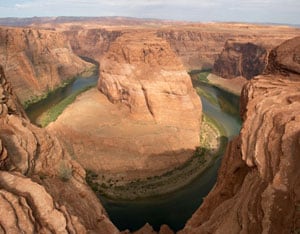
If you’re driving on Route 89 (about 5 miles south of the Carl Hayden Visitor center) you can take a short half-mile drive down a dirt road and then walk to a lookout point to see Horseshoe Bend from above.
You’ll need a wide-angle lens to get the entire bend in one picture. Be careful, though. There’s no railing and it’s a thousand foot drop!
You’ll finish the trip at Lee’s Ferry, the site of the ferry run by John D. Lee, who carried Mormon settlers on the Honeymoon Trail.
After Lee was tried and executed for his alleged participation in the Mountain Meadows massacre, his wife Emma continued running the ferry for two years until she finally moved to Lonely Dell Ranch a short distance away.
If you have an appetite for fresh fruit, the ranch has an extensive orchard of fruit trees and your guide can let you know what’s in season.
A short bus ride will bring you back to Colorado River Discovery’s headquarters in Page.
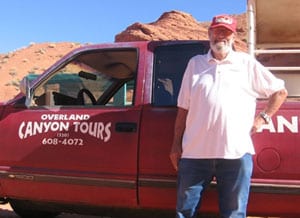
Antelope Canyon
Yet another attraction near Page is Antelope Canyon, one of many “slot” canyons in the area. A “slot” canyon is kind of a cave with the roof missing in some places. They are formed when flash floods tear through the area cutting a swath through the soft sandstone hills.
Sometimes they swirl and form spiral chutes down to the ground leaving beautiful rock formations in their wake. For some, it is a magical, mystical experience to stare up into the whirling patterns of stone and light.
My guide, Woody Woods, advised us to keep one hand on the wall at all times because many visitors become dizzy as they walk and look up at the same time. You can fall or bang your head on an outcropping and some people have ended up in the hospital as a result.

For most tourist sites in the Navajo Nation, a native guide is required to see the area. At Antelope Canyon, however, non-native guides have been allowed to contract out some of the work.
Woody works for Overland Canyon Tours, and he told me he was one of the first to recognize the potential of these amazing canyons, which had been nothing more than graffiti canvasses for local youths.

People thought he was crazy when he and a partner were sandblasting this graffiti off of the walls of Antelope Canyon. Who would want to walk through a dusty old heap of misshapen rocks?
As Woody and his partner were finishing up one day, a man came along and asked to see the inside of the canyon and, after getting a tour, offered to pay $2,000 per day to the Navajos for the right to use the canyon as a set for the movie “Highway to Hell.”
Since then thousands of tourists from all over the world have flocked to Antelope Canyon to see its famous Beam of Light – which is visible from April to September – and professional photographers have used the canyon to create stunning works of art.
There are other slot canyons in the area that are not as well known, so if you don’t want to share your magical, mystical experience with 25–50 other tourists, you can ask your guide for a tour of one of the lesser-known spots like Water Holes Canyon or Butterfly Canyon.
- Huntsville, Alabama: The Rocket City - August 13, 2012
- Jammer Joe at the Wheel: Glacier Park’s Spectacular Red Buses - June 1, 2012
- The Macau Grand Prix: Fearsome Motorsports Competition - January 1, 2010


